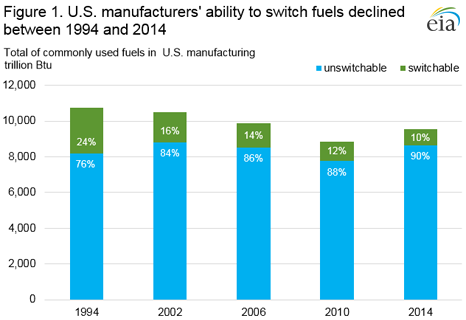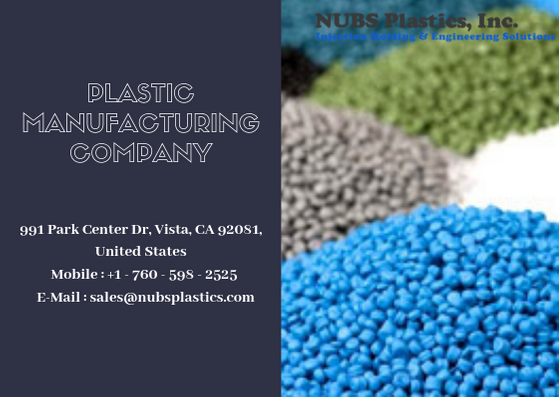All About U.s. Manufacturing
needs to actively promote this too. Knowledge@Wharton: Does the U.S. have enough competent workers who know how to work with these ingenious production innovations? How serious is the abilities gap and what should be

done about it? Rose: We researched this a number of years ago. As part of this research, we pulled headlines from Germany, from China, from Japan. And they all say there is a crisis, we do not have sufficient proficient employees. And yes, there is an abilities space in the United States, and this will be a huge challenge and a growing obstacle moving forward. The more fascinating question is whether it is a relative disadvantage to others. Nevertheless, we need action here too, specifically as we think of the effect of technology that is gazing us in the face. Government and scholastic organizations have a function, and they need to lean into that. However I believe more than ever, companies need to do that as

well. For a long time, business have actually dealt with the manufacturing employees as disposable, in a sense. This has got to alter. Employees, specifically in an extremely skilled production world, are a true competitive possession for a business. What does that imply? Companies need to own the issue, and they require to begin to construct tools to grow their own professionals, rotate them as they would executive groups to keep them engaged, re-train them when their job changes, and not count on federal or local government assistance or neighborhood college programs and so on. And everybody else is going to be struggling around attempting to pick up individuals on the margins.

Knowledge@Wharton: Is that what you imply by a relative downside of the other countries? Rose: Exactly. Knowledge@Wharton: Could provide us some examples of companies in the U.S. that are well placed for the future in terms of manufacturing? What have they done in a different way, and what can other manufacturers gain from their experience? Rose: Let me give you three examples. The very first manufacturer is John Deere. They are making excellent efforts to incorporate technology both into their products and also into their processes. They are developing their labor force in a great deal of rural locations where people would typically state it's been burrowed by previous financial slumps, and possibly the skills do not exist. They are taking a long-term view, and they are making smart financial investments. It is not that they are reengineering every factory wholesale today, however they understand what the roadmap is, and what the game plan is, for the next five and 10 years." Workers, particularly in an extremely
The 9-Minute Rule for U.s. Manufacturing
experienced production world, are a true competitive possession for a business." Another example is Ford. They have plant supervisors and managers who by themselves, are explore brand-new things like 3D printing or additive manufacturing for various parts or components, or for tooling. And then they have a coordination overlay staffed by an extremely senior gentlemen who supervises of testing a number of the innovative technologies, sorting out what the roadmap for release appears like, and handling the innovation school and activities that they have actually devoted to this. Walmart has been really public over the last several years about progressively sourcing product from the United States. They are not making themselves, but with their size and scale what they are doing is going through their supply chain and understanding in information things like what would the relative cost be for numerous various possible sourcing areas. So, if I want to manufacture bikes in the United States, do I have tire production capabilities? Can I make the transmission? Can I make the pedals? And where ever they find spaces-- due to the fact that one gap can keep the whole supply chain from relocating some cases-- they are encouraging providers to come back. I find that very thoughtful and very disciplined. It is something that I believe others could gain from, and something that would benefit U.S. manufacturing broadly. Knowledge@Wharton: Historically, America's lead in production was driven by its lead in development and R&D. Do you think the U.S. still leads the world in research and emerging innovations, or has that competitive advantage moved to other nations like China, for example? Rose: The U.S. But you should unpack it to actually see what is going on, and to see where there is threat involved. The method I consider it is breaking it into 3 categories. One, there is standard research study. This is things like studying how the universe was formed.
The function of standard research study is to construct the fundamental scientific understanding without any genuine concentrate on a product or a procedure. has constantly led there and continues to lead there by a broad margin. This is extremely valuable work since it sets the foundation for almost whatever that follows it. The second action is used research. This is science that is more focused on addressing a particular need. It is about trying to fix a practical issue. The

U.S. continues to succeed there too. But the genuine gap, or the emerging gap, is on the third category, which is developmental research. That has to do with taking the knowledge that was developed in the first 2 actions and turning it into materials, gadgets, systems, or procedures or techniques particularly. Compared to the U.S., China has actually invested very heavily on downstream

developmental research study. Which downstream developmental research links really carefully to creating products, to reengineering production processes, and ultimately to offering products. The U.S. requires to think about how to balance the R&D overall between those 3 containers, and ramp up a few of the developmental research study to help support U.S. production interests. Knowledge@Wharton: Does that mean that the U.S. needs to end up being better at execution along the third measurement that you mention? And how can the U.S. do that? "The U.S. requires to ... ramp up a few of the developmental research to help support U.S. producers and U.S. production interests." Rose: That's right. It is practically startling.
The Main Principles Of U.s. Manufacturing
Lot of times you will find there is upstream research study in standard and applied locations that downstream business that may monetize it have no concept about or access to. There is no process to systematically concentrate on the crucial topics and move it through that funnel, if you will, down to things that we can utilize to sell or integrate into our procedures. Knowledge@Wharton: What do you think are some of the most appealing locations of basic research

that could lead to producing advancements in the future? Rose: I am not a researcher or a scientist, so it is harmful for me to risk guesses on these things. But I would suggest a beginning point might be to look at a group of people that have analyzed this really closely. The bright side is that they make their intent very clear in their five -year-plans.
I would encourage people to read the existing one and look back at the last couple of. China is concentrating on areas like green energy, biotech, and AI and how that will drive and transform supply chains and making processes. Knowledge@Wharton: If you were to take a look at American production 5 or ten years from now, what do you think it would look like, and what should be the leading concerns for U.S. producers to prepare for that future? Rose: I have a lot of expect American manufacturing. There are some genuine tailwinds that we have set out around the long-lasting night out of expenses and the future innovations to assist us remain competitive. Where I believe we need to focus is the following: The U.S. has actually always been hesitant to develop a coordinated industrial policy. We are extremely hesitant
to" pick winners." That is something that is going to significantly hinder us as you have to invest at a greater scale to find the breakthroughs and drive them to conclusion.